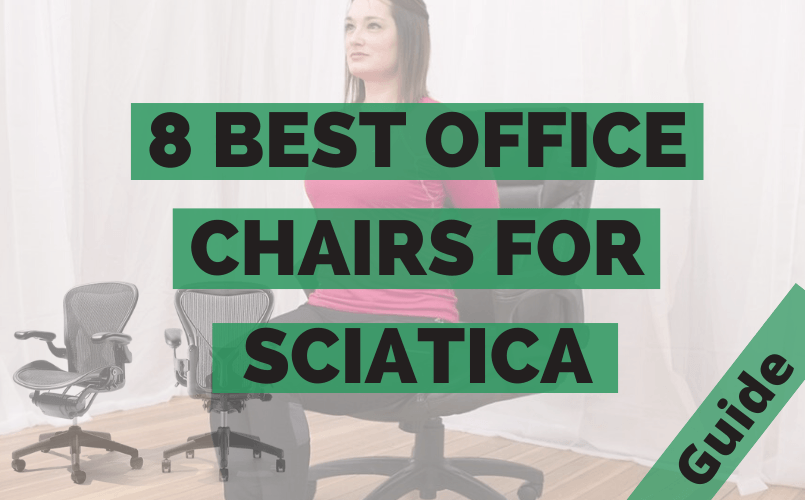
By now, most of us know that too much sedentary behavior — or spending extended periods of time lying or sitting down — has a harmful impact on our health.
Almost 80 percent of all people in the United States complain of having some kind of back pain.
A sedentary lifestyle leads to an increased risk of various health concerns, including weight gain, diabetes, heart disease, low back pain.
The obvious solution, of course, is to increase your level of physical activity.
But what about those of us who work in the office, who have no choice but to spend hours seated at our desks?
Those 2 Companies Invested Years of Research & Development Into Its Chairs. Products have thoroughly been Tested for Efficiency, Safety (mixing pressure mapping, and 3D scans). Even though those 2 companies are leaders, there are Few Good Chair Models to Choose From (listed below) that are a bit less expensive than . & ..
Few pointers:
- Unsupported sitting leads to a slouched posture & can cause physical pains and negative cognitive effects.
- Good chair provides healthy posture is marked by a properly supported sacrum to stabilize lumbar spine and pelvis
- Zonal Support (targeting specific areas of the body )
.
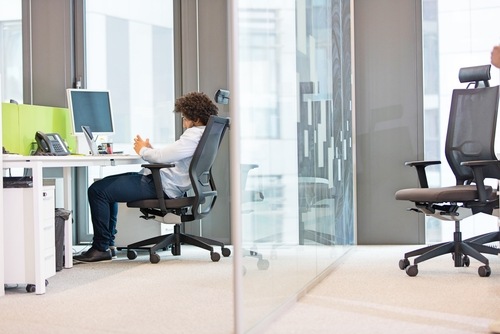 Well, you still have to find a way to incorporate some exercise, even just half an hour of physical activity, into your daily routine! But is there a way to minimize the harm being done to your body while sitting down?
Well, you still have to find a way to incorporate some exercise, even just half an hour of physical activity, into your daily routine! But is there a way to minimize the harm being done to your body while sitting down?
The risk of developing low back pains can be mitigated by using a good office chair.
Don’t settle for stuffing a pillow behind your back to relieve the discomfort caused by non-ergonomic office chairs!
A good chair will do wonders for your posture. Even simple features like the adjustability of seat height and seat depth to match the body of the user can help prevent strains on our nerves, muscles, and bones.
And if you’re already experiencing back pain, such as sciatica, a chair specifically designed for strong lumbar support can help ease your pain.
Read on to find out more about the best office chairs for people with sciatica to sit in.
Table of Contents
Best Office Chair For Sciatica (Updated Models for 2024)
These sciatica chairs have been ergonomically designed to not only give you comfort but also to provide good support for your spinal disks and lumbar curves.
This helps manage the pain caused by sciatic nerve irritation and helps you maintain good posture while sitting for long hours.
Check out our top picks for the best office chairs for people with sciatica.
1. Herman Miller Aeron Task Chair: #1 Best Ergonomic Office Chair For Sciatica Pain
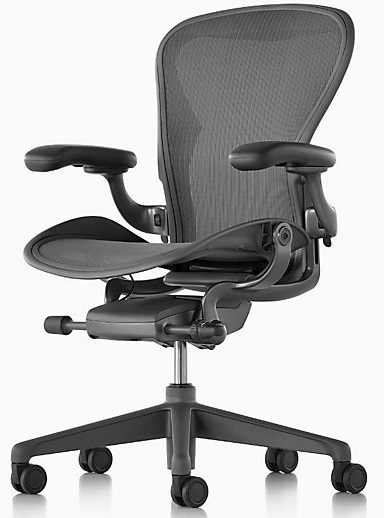
Our top pick is the Herman Miller Aeron task chair, manufactured by one of the leading office furniture companies in the world.
Already an icon among office chairs, the Aeron was remastered in 2017 by the Herman Miller Company to fit modern work environments perfectly.
Its ergonomic waterfall edge design and top-craftsmanship build provide maximum support and comfort, promoting better spinal health.
It adjusts to your body, giving you better posture and eliminating backaches, joint stiffness, and pain.
Key Features:
- The Herman Miller Aeron’s mid-back design gives support from your back up to your shoulder blades. It features a patented PostureFit design that supports the base of your spine, helping you maintain a natural forward tilt to prevent slouching.
- It also features 3-D armrests that are attached to the backrest so you can move naturally and maintain a good posture. It is fully adjustable both up and down and pivots left to right. You also have an upholstery option of either the standard or the leather armrests.
- Instead of the usual foam padding, the Herman Miller Aeron is covered in the soft, flexible and supportive 8Z Pellicle mesh. It is firm, not cushiony. The woven pellicle mesh covers 8 spots in the chair to help keep you cool and comfortable by allowing the natural flow of air, vapor, and body heat.
Summary: The Herman Miller Company made the Aeron task chair with your health in mind making it the great chair for people suffering from pain. Its innovative design and great quality build that not only gives you comfort but also improves spinal health is the reason why the Herman Miller Aeron has become the most shop for office chair for back pain worldwide.
.
2. Raynor Ergohuman High Back Mesh Office Chair
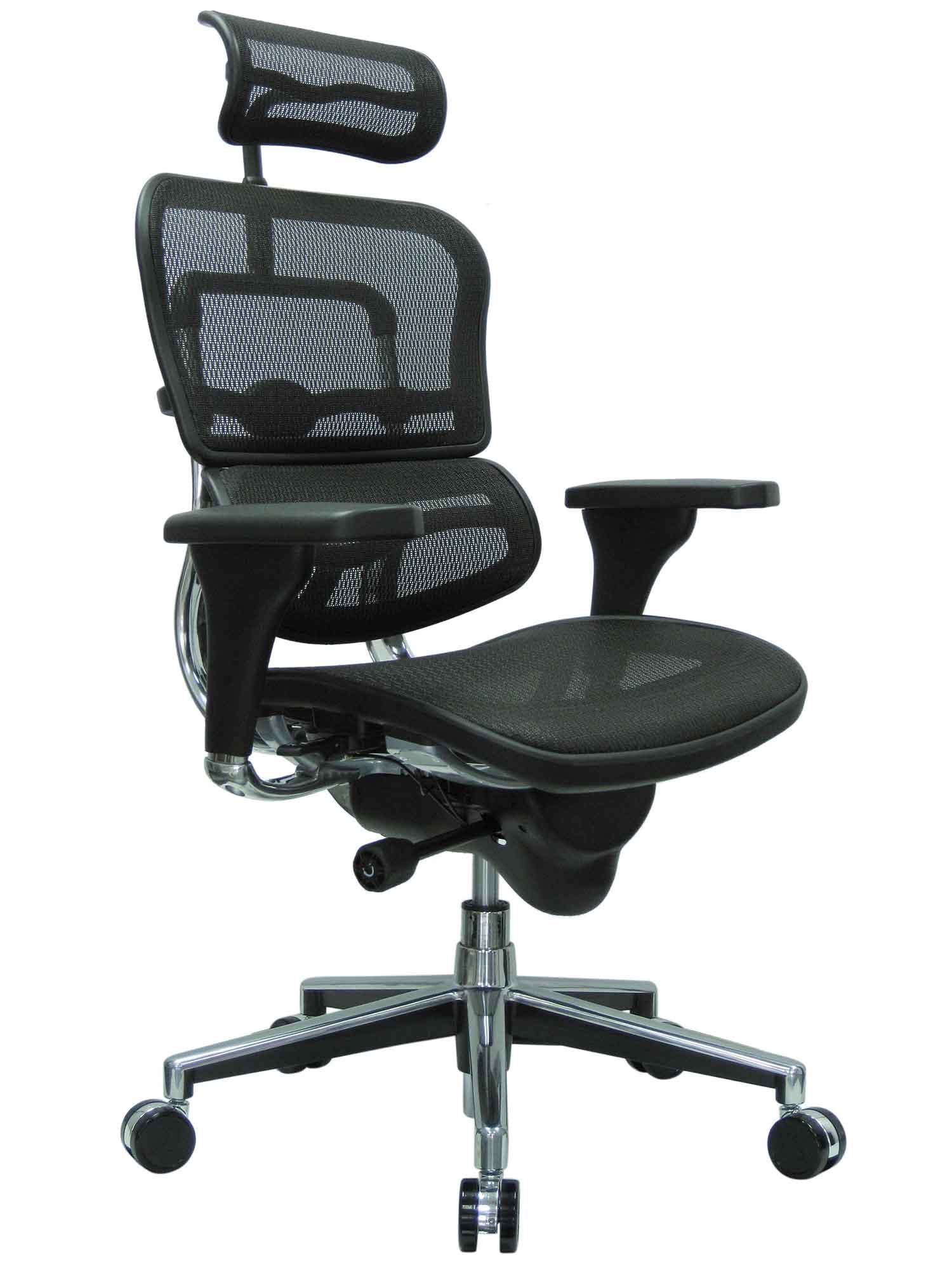
Regarded as one of the closets alternatives to the Herman Miller Aeron, the ErgoHuman High-Back Mesh Chair (ME7ERG) is our second top pick for those with sciatica.
This chair will fit the comfort and spinal health needs of everyone, from gamers to executives, because of its versatile adjustment options.
The ErgoHuman ME7ERG stands out because it is one of the few mesh chairs that come with a headrest at an affordable price. Most mesh office chair models with a headrest usually come with a higher price tag.
Key Options:
- It offers a unique adjustable lower lumbar support, separated from the upper backrest. It is also auto-adjusting, so the lumbar support moves with and adjusts for you.
- The Raynor ErgoHuman ME7ERG also has a height-adjustable headrest that provides better support than regular headrests as it was designed to fit your nape and head. But if you are below 5”2 or over 6”5, the headrest, even with adjustments, may not fit you as well.
- The multi-dimensional armrests are also fully adjustable to give you better support and comfort. It can be slid back and forth and pivoted in and out. This helps in maintaining good posture while moving from different positions.
Summary: The ErgoHuman High-Back Mesh Chair is a good suggestion for people looking for a mesh chair that comes with a headrest but is cheaper than the Herman Miller Aeron. Its fully adjustable features give good spinal support and overall comfort that can help you manage sciatica. However, the build quality is less durable, and its dimensions are more suited for people of average height and weight.
.
3. Herman Miller Embody Chair: Top-Rated Ergonomic Office Chair
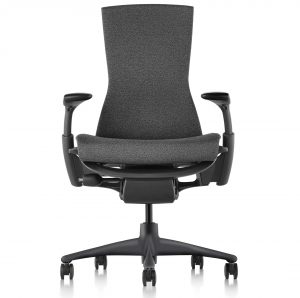
Packed with unique technology and features, the Embody chair is another high-end quality product by Herman Miller.
Built with the help of physicians and high profile designers, as well as the use of top-quality components, it is considered the top-rated ergonomic office chair in the market. That comes with a heavy price tag!
The Herman Miller Embody was designed to adapt to your body dimensions.
It is solidly built for maximum flexibility to allow you to move and change position freely and comfortably while keeping you in proper position and posture.
Key Options:
- The Herman Miller Embody boasts of its Pixelated Support feature that gives you the feeling of “floating” while sitting down. The pixels in the seats and backrest automatically adjust to your movements. This is helpful for your pain as it relieves pressure on the spine and promotes natural movement and blood circulation.
- It also offers a Backfit adjustment, which allows you to adjust the backrest to fit perfectly with the natural curve of your spine. Once adjusted to your liking, the backrest will automatically adapt to your movements giving constant support even as you shift positions.
- The Herman Miller Embody, however, lacks some key adjustment features key to ergonomic seating like lumbar support, armrest depth and pivot, and back height. These missing adjustments make it a bit hard to fine-tune to your liking. But it does have back angle recline and tension adjustment options, plus different levels of tilt positions that can be locked in place.
Summary: The Herman Miller Embody is the best ergonomic chair that can give optimum comfort, support and health benefits, especially for people with sciatica. However, you might be disappointed with the limited lumbar and armrest adjustments, given that at such a high price point, you’d expect it to be virtually perfect.
.
4. Modway Articulate: Best Value
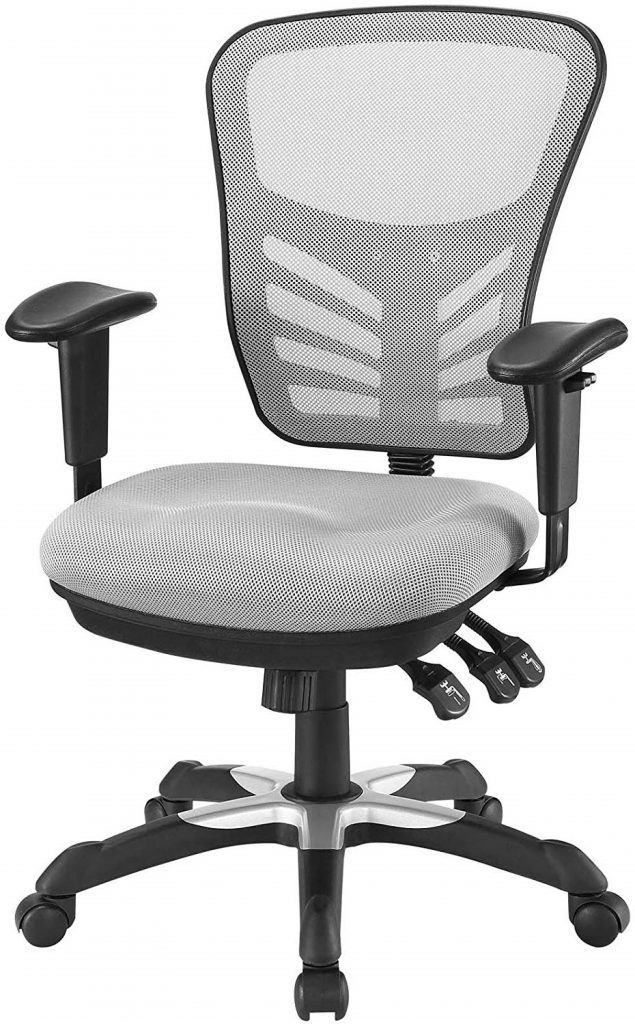
If you’re on a tight budget, then you might want to take a look at the Modway Articulate Ergonomic Mesh Chair.
It is one of the most affordable office chairs in the market that can help make you comfortable and ease your pain while sitting for long hours.
For a chair with a price tag of less than $150, the Modway Articulate Ergonomic Mesh Chair offers a modern design, several ergonomic adjustments, and is available in different colors.
Of course, it lacks a few features compared to the top-of-the-line models of expensive brands, but it can still be a good value for your money.
Key Options :
- It offers a mid-back design that aims to give better support for your lower back. The backrest height can be adjusted within a five-inch range. It also has a built-in lumbar support function, which, however, is not adjustable but can still provide proper support.
- The Modway Articulate Ergonomic Mesh Chair’s backrest is covered in a high-density mesh fabric that allows natural airflow while still providing you with back support. The seat is padded with a six-inch thick fabric cushion.
- Its most positively reviewed ergonomic feature is the adjustable armrests which may fit perfectly for people of average to above-average height. It also features a 360-degree swivel, a lockable tilt function and tension adjustment which can help you find a comfortable position to ease your sciatica.
Summary: With a price tag of less than $150, the Modway Articulate Ergonomic Mesh Chair is a comfortable chair with ergonomic adjustments to ease your sciatica. Plus it looks good in your office! But many reviews state that the materials will wear out sooner compared to high-end products on the market.
.
5. Topsky Mesh: Computer Chair For Long Hours
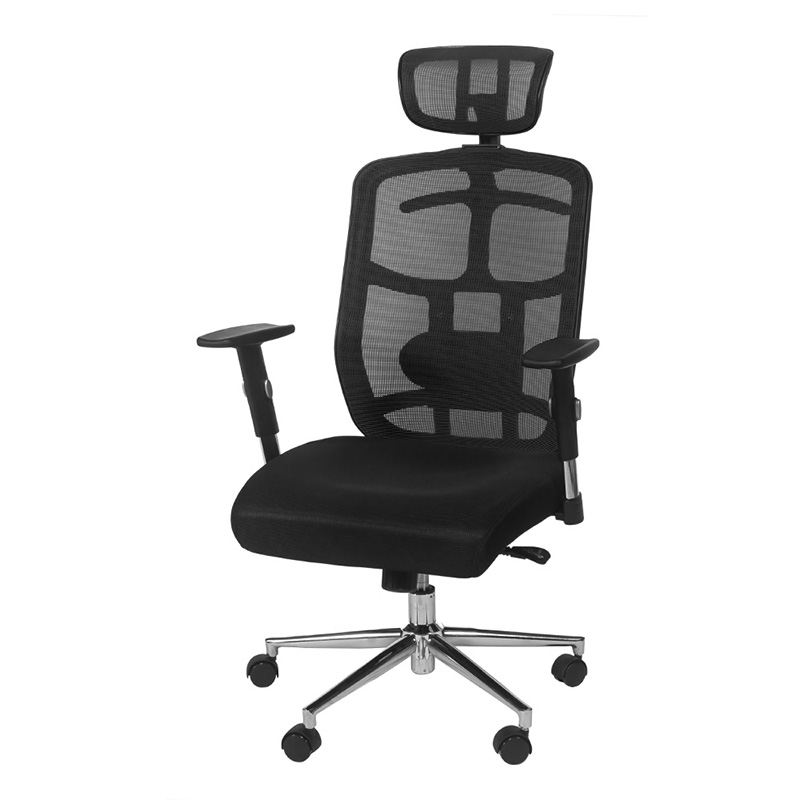
Cheaper office chairs are good for your wallet, but not so good for your back. They usually come in plastic, lack basic ergonomic adjustments, and have uncomfortable or unsupportive cushions.
That’s not the case with the Topsky Mesh Computer Office Chair. Even with office chair price of less than $200, you can purchase a good chair that is perfectly suited for long hours seated in front of a computer at work.
Topsky is known for its modern designs and fully ergonomic home office furniture. The chair is shipped unassembled, but you can opt to have it expertly assembled with an additional fee.
Key Options:
- The Topsky Mesh Computer Office Chair has a backrest with high-density mesh that allows for natural airflow, keeping you cool during prolonged sitting. On its seat, however, is a thick sponge cushion that may not be as breathable as the back.
- It stands out among other brands in its price range as it is one of the few affordable mesh chairs with an adjustable headrest. The headrest is detached from the backrest and offers a 3D adjustment of its height and angle to match your height. It also comes with a built-in clothes hanger at the back to keep your jacket or suit in good condition.
- It has several ergonomic adjustment features, such as padded armrests that can be adjusted up or down to fit your height comfortably but cannot be moved left or right. It also offers a 360-degree swivel and lockable tilt adjustment up to 145 degrees to provide you natural support in your desired position. It also has adjustable lumbar support that can be moved backward or forward.
Padded armrests Adjustable lumbar
Summary: The Topsky Mesh Computer Office Chair is a good choice for people with pain on a tight budget. It provides the comfort, support, and pain-easing benefits of a basic ergo chair. But the quality of materials and extra features cannot match the levels of high-end brands. It is a great chair for neck pain!
.
6. Argomax Black High Back Desk
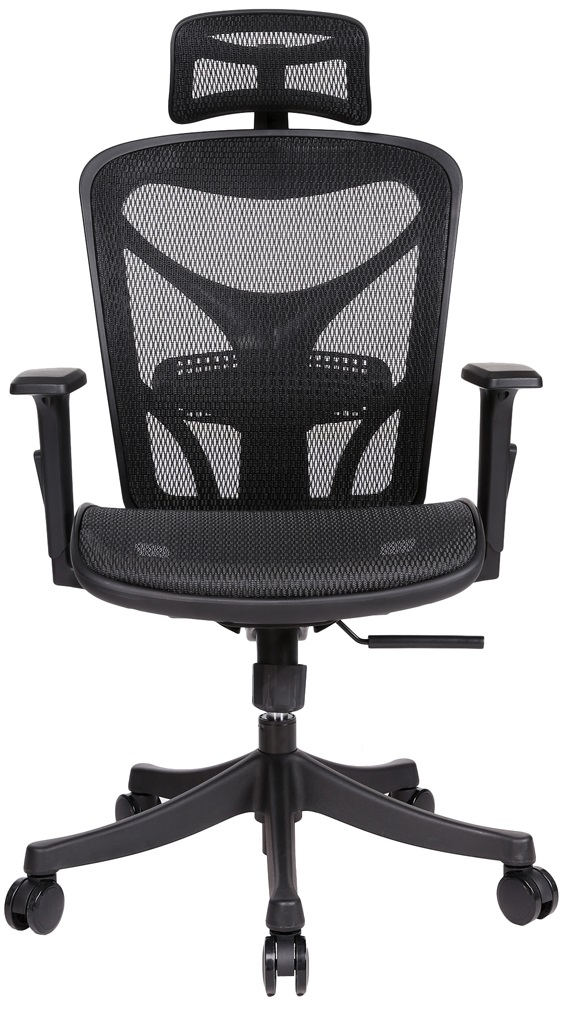
The Argomax Black High Back Desk Chair is another popular option that proves that affordability should not mean poor quality.
This model — just around $250 — offers comfort and support for the spine, to ease your pain.
(The Argomax comes in another version, the Argomax Mesh EM-EC002, which is more expensive but has improved armrest and lumbar supporting features.)
Key Options:
- It is made with industrial-strength nylon with breathable mesh glass fiber, to promote natural airflow for a cooler sitting experience. The fabric materials are mold-resistant and are washable. The fabric also adds to its elegant and modern look that would fit well in any office design
- The Argomax also has a smart auto-adaptive base that automatically adjusts to your weight and can support up to 330lbs, proving its durability and value for money.
- Ergonomic adjustability, including a built-in rotatable headrest, tilt back and tilt tension adjustment, 2D padded armrests, and seat height adjustments. These promote proper posture, blood circulation, and spinal health.
- It has only a single lever used to adjust the height and tilt back of the seat, providing lumbar adjustment. However, some reviews have said that the 2-in-1 lever can be a bit confusing to use.
Summary: The Argomax Black High Back Desk Chair is a solidly-built ergonomic office chair that comes at an affordable price range. It offers adjustability features to promote better posture and spinal health for people with sciatica. However, you might find it a bit uncomfortable because of the dense foam seat and wiggly 2D armrest.
.
7. Comfort Products 60-5800T Commodore Chair: for Lower Back Pain Relief
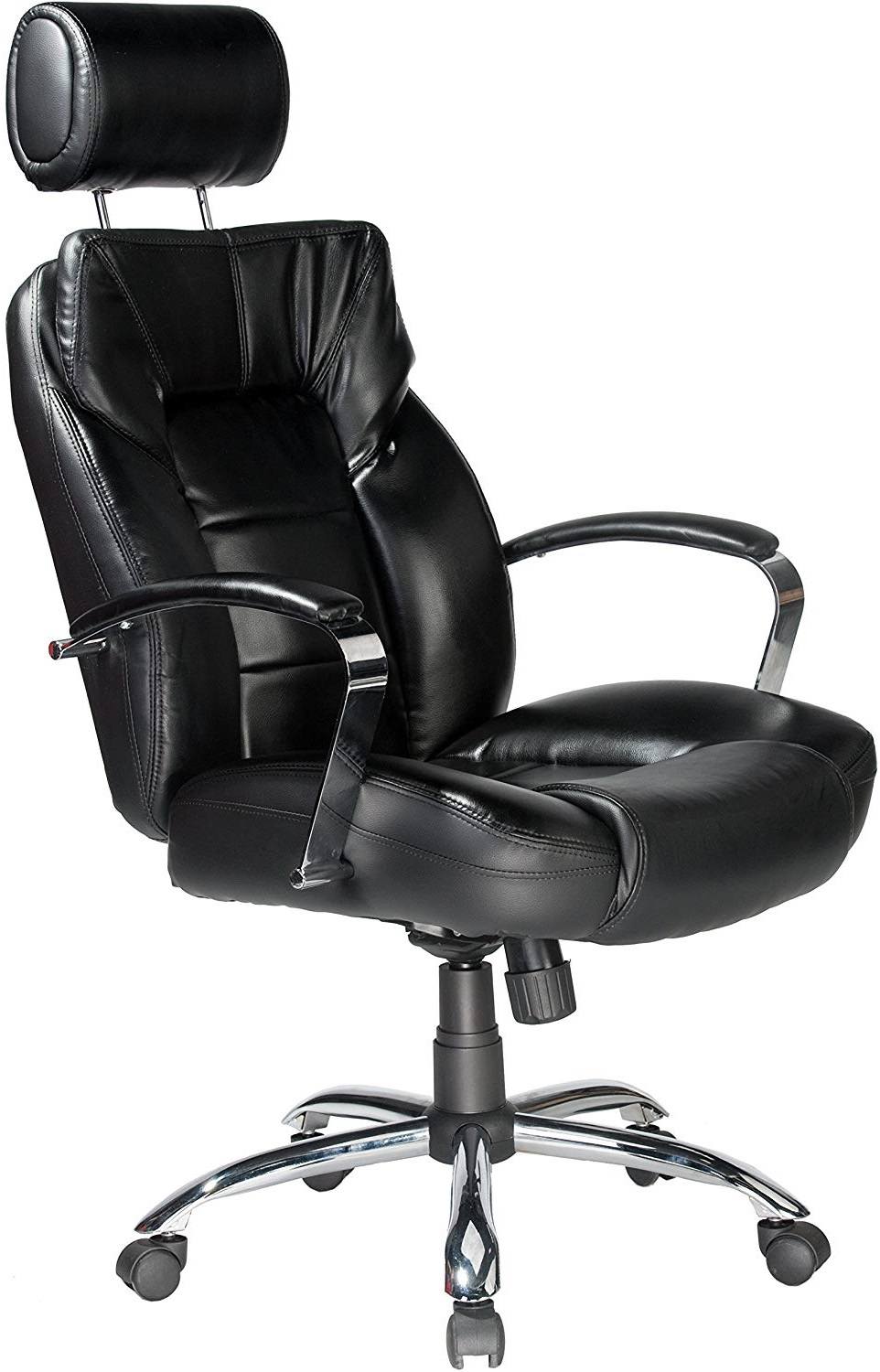
The 60-5800T Commodore Chair is made by Comfort Products, a company with a history dating back to 1919, and known for products that emphasize wellness, productivity, and style.
If you’re not into mesh chairs, the 60-5800T Commodore (also called the Commodore II Big & Tall Leather Executive Office Chair) is the classic, sturdy, black leather chair favored by managers and executives.
But it’s not all about aesthetics! The Commodore is also known for ergonomic features — such as wide seating capacity, and an adjustable headrest, tilt, and height, among others — which make it one of the best chairs on the market for lower back pain.
Key Options:
- This heavy-duty chair is has a chrome metal base sturdy enough to handle over 350 lbs. It has a wide and high backrest with integrated lumbar support covered in luxurious bonded black leather. This gives good comfort, sturdy spinal support, and promotes proper posture.
- However, the leather upholstery also restricts natural airflow to some degree. This is fine for winter or air-conditioned offices, but maybe a nuisance to use in warmer temperatures.
- Designed for big and tall people, it offers wide contoured seats with leather-wrapped 6.5” foam padding to provide comfort and support for your pain. The seat height is adjustable from 19.5” to 23.5” (which may be still too high for shorter users).
- The Commodore chair is packed with ergonomic adjustments, that give you full control over your desired seating comfort. It also has an adjustable headrest, tilt tension with tilt lock, and a 360-degree swivel chair function.
- Its high armrest of about 7.5” is not adjustable. It may be very uncomfortable for small people and can be too high for some desks.
Summary: The Comfort Products 60-5800T Commodore chair is the best chair for lower back pain because of its comfortable thick and contoured cushion combined with useful ergonomic adjustments. Its leather upholstery gives it a luxurious look. The sturdy built can handle big and tall people but may not be comfortable if you are a short person.
.
8. Leap Ergonomic: Best Executive Chair for Sciatica Under $1000
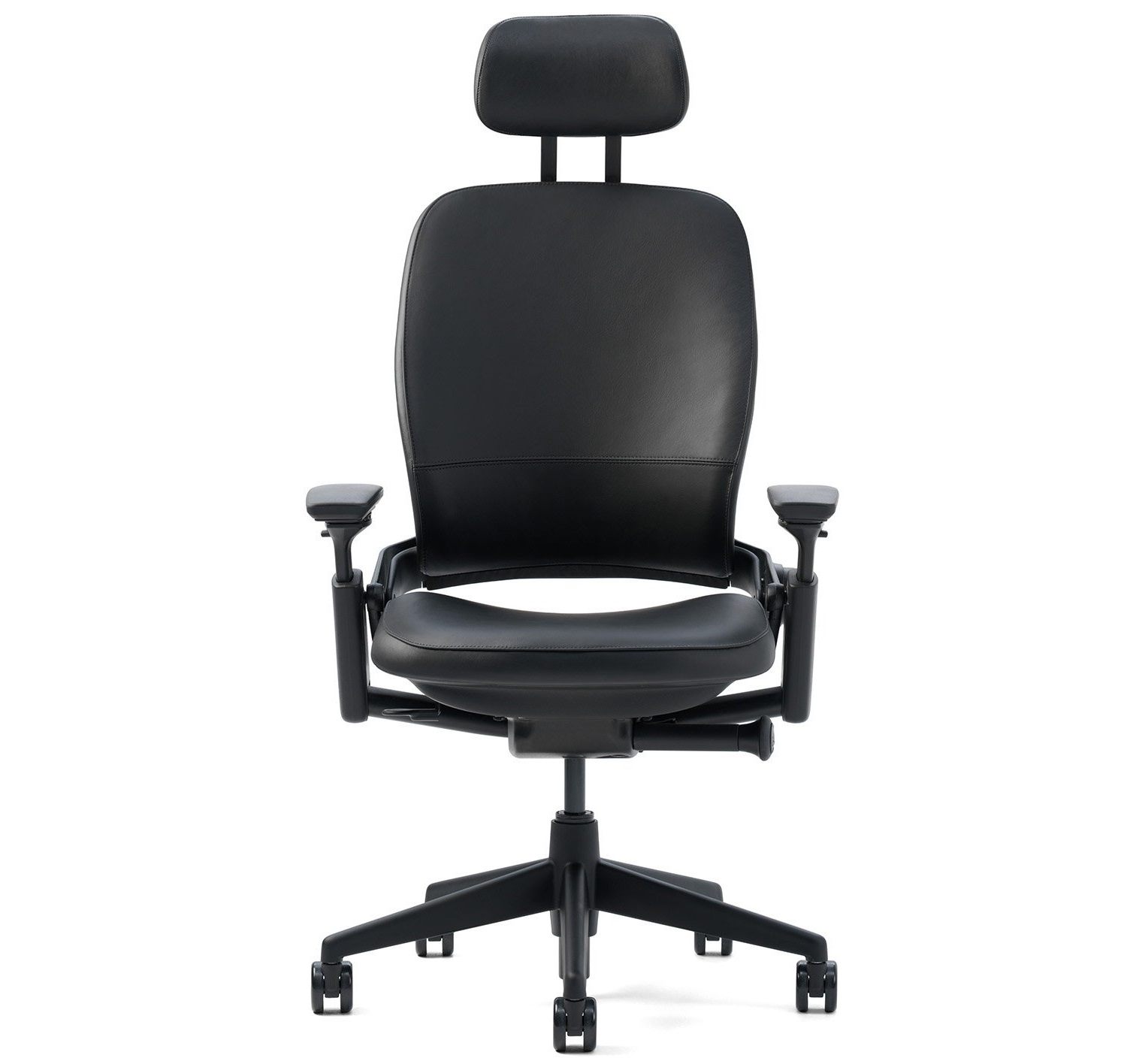
Providing a combination of ergonomic features, modern design, and durability, the Leap Ergonomic Chair is the best executive chair.
It is made by Steelcase, a reputable company that has been in the office furniture business since 1912.
The most basic version comes with a price tag of around $800.
Available with customizable features (such as a choice between leather or fabric upholstery), you can pick what best fits your needs.
Once you add in all the upgrades, the price rockets to over $1700. But it comes with a lifetime limited warranty, so this kind of chair is definitely a long-term investment.
Key Options:
- The Steelcase Leap Chair is equipped with patented LiveBack technology that “mimics the movement of the spine and supports your body as you move,” making it one of the best options on the market for sciatic pain.
- If you add on the optional headrest and armrests, they provide movement for height, width, depth, and pivot, providing maximum comfort and support for your head, neck, shoulders, and arms.
- The height-adjustable seat has thin but soft padding which conforms itself to your body as you sit. The front part of the seat is flexible and allows natural movement for better blood circulation and reduces the risk of numbness or pain.
- The chair is shipped fully assembled. It is relatively compact and can fit any office size. It is also sturdier than many of its competitors, as it can handle up to 400 lbs.
- Other optional additions to its components are a platinum or polished aluminum frame and base, hard surface vs carpet wheels, and stool. You can also choose to purchase it with leather instead of fabric upholstery.
Summary: The Steelcase Leap combines useful ergonomic features with a sturdy built and modern look to give you good spinal support with an executive style. But the standard version lacks some key components and you do need to shell out more cash if you want more features.
.
What is Sciatica?
Your back is supported by your spine, which is made up of bones called vertebrae. These vertebrae are separated by discs of connective tissue.
When these discs become herniated or worn out, their soft centers start pushing out through tears or ruptures in their harder, rubbery edges.

That puts pressure on the nerves surrounding the disks, including the nerve.
That’s basically what sciatica is. It is sciatic nerve pain or symptoms resulting from disk herniation, irritating the sciatica nerve.
The nerve is the longest one in the human body, running through your lower back, hips, legs, and feet.
With sciatica, the nerve pain normally starts from your lumbar area (lower spine), spreading through the rest of the sciatica nerve (from your hips to your feet).
You may experience sciatica as:
- a mild ache
- a burning sensation
- severe sciatica nerve pain
- numbness
- weakness
- a tingling sensation
People who are most prone to sciatica are those of old age and are overweight because of their degenerated or overstressed spine.
Other causes may include conditions like isthmic spondylolisthesis, often arising from injury, birth defects, or illness, which also irritates lumbar nerve roots and causes pain along your sciatic nerves.
However, lifestyle and occupational factors also put you at risk of sciatica!
Prolonged sitting results in excessive stress and pressure on your spinal disks, which may lead to nerve problems.
People who suffer from pain may experience it for 4-6 weeks, but this can go on longer without proper care and medication.
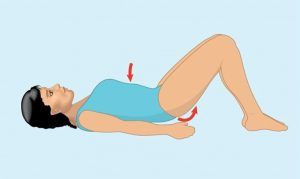 The most common recommended relief for sciatica sufferers are:
The most common recommended relief for sciatica sufferers are:
- exercise
- medication (pain relievers)
- hot and cold compress
In extreme cases, surgery or spinal injections are necessary.
To lower the risk of developing sciatica, it is suggested that you improve your posture, manage your weight, and avoid prolonged sitting.
If prolonged sitting cannot be avoided as part of your work or lifestyle, it is important to maintain proper posture and lumbar support by choosing the best office chair for your needs.
Summary: Sciatica is a symptom caused by disc herniation that leads to irritation of the sciatic nerve, characterized by pain in your lower back down to your buttocks, legs, and feet. Proper posture and lumbar support when seated — which can be provided by a good office chair — are important components of the treatment for sciatica.
What is Piriformis Syndrome?
One other possible cause of sciatic pain is a condition called piriformis syndrome.
Your piriformis muscle is located in your buttocks and is used for hip rotation.
When this muscle gets inflamed or swollen, it irritates the nerve.
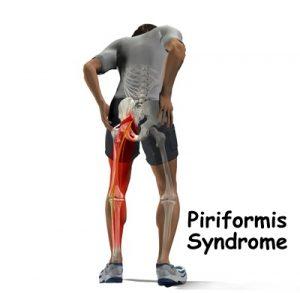
While sciatica and piriformis syndrome both affect the sciatic nerve, any treatment plan must focus on alleviating the source of the stress, whether it’s in your lower back or in your buttocks.
Piriformis syndrome usually has these symptoms:
- Shooting or chronic pains down the buttock or back of the leg
- Burning sensation
- Aching sensation
- Tingling sensation across the nerve
- Pain when standing from a lying position
- Pain aggravated by prolonged sitting or hip movements
As with sciatica, if you have piriformis syndrome, it may be a good choice for you to invest in an ergonomic office chair.
Just be sure you have an accurate diagnosis for your back pain!
Knowing the root cause of your sciatic pain will help in avoiding certain sitting positions that can aggravate your pain or increase the risk of further irritation to your sciatic nerve.
Summary: Piriformis syndrome is a condition that affects the nerve. Pain may present in ways similar to sciatica. There is some variation in the treatment for piriformis syndrome and sciatica, so a correct diagnosis is crucial to choosing the best office chair for your needs.
Best Office Chair for Piriformis Syndrome
Having to sit at a computer all day can be a serious problem for those with piriformis syndrome — that’s what happens when the sciatic nerve runs through the piriformis muscle. It’s a muscle that gets pulled painfully when the piriformis comes into contact with the bottom of your leg, and it often stems from issues with your glutes.
You can do plenty to correct the problems causing your piriformis to be twisted, but for good posture, you should get a good desk chair to support you and ease the strain on your body.
There are plenty of models out there that are less expensive than a pricey full-length leather chair, but if you’re not willing to invest, there are a few alternatives that can give you good posture and relief from the pain. And it might not even be that expensive — you just need to decide what’s worth your money.
Over the next few weeks, we’ll cover both high-end and budget options. Each model will take a look at the same data points — how each sits, how it feels, and what it can do for your posture — but we’ll go through what’s worth your money and what’s not.
We’ll also evaluate their looks and feature some in-depth comparison charts. The goal is to find a good solution that won’t set you back too much, or that will get you back in the chair quicker.
So buckle up, because it’s about to get fun. Before we get started, let’s talk about why you might have piriformis syndrome in the first place, and how to work around it in the meantime.
Can a Bad Office Chair Cause Sciatica?
On every floor of a busy hospital, there are a handful of chairs. These utilitarian low-backed seats are what doctors call “epidural chairs” — low, upright, and contoured. And they are the worst place to sit.
Joana Virissimo, a physical therapist and lead researcher on the study, told NPR she has seen cases of sciatic nerve pain among her patients that are immediately aggravated by the simple act of leaning forward. “In a lot of cases it’s only the chair,” Verissimo says. “The patient will go to the wall or to the armrest or to the window and lean forward, and that just exacerbates the problem.” But why? And could an office chair really be to blame? Exertion, gravity, and poor posture.
There are a few reasons why a bad office chair could cause sciatica, says Joshua Miller, a physical therapist at Beth Israel Deaconess Medical Center in Boston. But the most important reason, he says, is that people often sit in the wrong chair.
The most common and well-known problem with the office chair is that it’s just not ergonomic. The chair can be too narrow or it’s too high or too wide or it’s made of a hard material like plastic. All of these factors can put a strain on your back, especially in those areas that run down the spine.
Are Kneeling Chairs Good for Sciatica?
I know there are a lot of knee-slappers out there, but I was a bit skeptical. After all, I’ve taken a lot of knee-slappers myself. So, what if you could relieve some of the knee pain that comes from bending and standing? Seems like a no-brainer, right?
The debate, however, is in regard to sports-specific devices. Kneeling “conversation” chairs can be installed in gyms, swimming pools, and athletic training facilities and allow the user to complete their workout while sitting on a knee-supported chair.
According to Dr. Adam Ebbin, who is the anesthesiologist and orthopedic surgeon for Arthroscopy Associates, kneeling is actually a great alternative to sitting. “With knee osteoarthritis, knees may swell with after-exercise fluid, and because there is decreased blood flow, the knees can’t drain. But if you sit on a kneeler for a period of time, it’s not good for the knee,” Ebbin explained.
The problem, Ebbin explained, is when we sit, we don’t know what’s going on and sometimes the joints lose control of their movements.
For the knee, I recommend anyone who works out to do what is called Active Release Techniques,” Ebbin said. He said this could mean adjusting the body position on a knee-supported bench and/or doing a variety of different exercises to stretch the muscles and joints.
Does Sitting on a Hard Chair Help Sciatica?
Sciatica is a condition characterized by numbness and pain in the lower back or legs, which is caused by a disc bulging or popping out of its position in the spine. People suffering from sciatica may experience severe pain, weakness, numbness in the back of their thighs or calves, or numbness in their feet.
Sciatica can be caused by injury to the nerves in the spine or even poor posture. Research has found that the most common type of sciatica is called lumbar sciatica, which is caused by weakness and pressure on a nerve in the lower back.
You can reduce the amount of pressure on a nerve by standing up and lowering your back and sitting in a good position. Do you do any of the following while sitting on a hard chair?
Can Office Chairs Cause Sciatica?
Sciatica is painful muscle stiffness and pain in the buttock area or lower back, usually on the side of your butt. The sciatic nerve extends down your left leg into your foot and into your calf. Sciatica causes pain and weakness in the lower back and leg and makes it difficult to walk, and it can even cause leg cramps, muscle pain, and numbness or tingling in the feet and hands.
Your symptoms may also vary and include numbness or weakness in your toes and feet, tingling in your fingers or toes, or a small circular spot on your foot.
The cause of sciatica is thought to be a misalignment of your muscles or connective tissue in your lower back and hip, causing nerve damage, which leads to pain. Types of Sciatica. Sciatica is caused by your spine twisting. Over time, you may have disc damage and spinal stenosis.
How to Sit Comfortably With Sciatica
If you have sciatica, then you already know that sitting for long periods of time can aggravate your pain.
So when you do have to sit, here are some tips for the best way to sit at a desk with sciatica:
- Don’t sit too long. Take regular breaks. Every fifteen to thirty minutes, stand up and move around, do some stretches, and do other back-targeted exercises.
- Sit straight. Your back and buttocks should touch the back of your chair. If you sit perched near the front of your chair, then you may strain your back further. Let the chair do the work for you! Your back should be supported by the chair.
- Adjust your knee position. For some people, keeping their knees even with their hips helps to reduce sciatic pain. Others prefer to elevate or lower their knees slightly. Find what works for you; just keep your feet evenly planted on the floor or on some other support.
- Use an ergonomic chair. Don’t suffer using gaming chairs that fight your body instead of adjusting to it! Make sure your chair is suited to your height, weight, and unique body type.
Summary: Those with sciatica should use an ergo chair that lets you sit straight and make adjustments until you find your most comfortable sitting position. Even then, avoid sitting down for too long.
Hard or Soft Chair for Sciatica
When dealing with sciatica, the choice between a hard or soft chair can significantly impact comfort and potentially influence the progression of symptoms. Scientific understanding of this matter suggests that neither extreme is universally beneficial, as individual preferences and the specific characteristics of the condition play crucial roles.
Soft chairs, often associated with plush cushions and ample padding, may initially seem more comfortable for individuals experiencing sciatic pain. The cushioning can alleviate pressure on sensitive areas, potentially providing temporary relief. However, prolonged use of excessively soft chairs can lead to poor posture and inadequate support for the spine. Without proper support, the spine’s alignment may be compromised, exacerbating sciatic symptoms over time.
On the other hand, hard chairs offer firmer support, which can help maintain better spinal alignment and distribute body weight more evenly. This alignment is crucial for reducing pressure on the sciatic nerve and minimizing discomfort. However, sitting for extended periods on a hard surface may cause discomfort and increase the risk of pressure points, particularly in individuals with existing sciatic pain.
The optimal chair for sciatica management strikes a balance between firmness and cushioning, providing adequate support without sacrificing comfort. Ergonomically designed chairs with adjustable features, such as lumbar support and seat depth, allow individuals to customize their seating experience to their specific needs. These chairs promote proper posture and spine alignment, which are essential for relieving pressure on the sciatic nerve and preventing further aggravation of symptoms.
Additionally, incorporating regular breaks and movement into sedentary activities can help alleviate sciatic discomfort regardless of chair type. Engaging in stretching exercises, standing periodically, or using a standing desk can reduce the prolonged pressure on the sciatic nerve and promote blood flow to affected areas.
Ultimately, the choice between a hard or soft chair for sciatica management depends on individual preferences and symptom severity. Some individuals may find relief with the cushioning provided by a soft chair, while others may benefit from the firm support of a hard chair. However, regardless of chair type, maintaining proper posture and incorporating regular movement are essential strategies for managing sciatic pain and promoting spinal health.
Consulting with a healthcare professional or physical therapist can provide personalized recommendations based on individual needs and medical history. By considering factors such as ergonomic design, support features, and personal comfort preferences, individuals can select a chair that supports their sciatica management goals effectively.
Things to Consider When Choosing the Right Model
There are a lot of options available for people suffering from sciatica. Apart from the office chairs listed here, there are specialized options for users who have specific preferences.
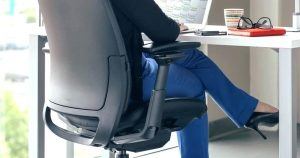 If you need to work at a drafting table, for example, you’ll want to look into the best drafting chair for the sciatica nerve.
If you need to work at a drafting table, for example, you’ll want to look into the best drafting chair for the sciatica nerve.
If you are in a line of work that involves forward reach, such as sewing or writing by hand, kneeling chairs are now used in some offices.
There are also other products that are designed for the home instead of the office.
Several companies offer living room chairs for sciatica or recliners for sciatica.
There are even sciatica chair cushions. You may want to explore these items if you want to make sure you’re always seated comfortably!
When it comes to choosing the best office chair for sciatica, here’s what you should consider:
- Back support. A good ergo chair must provide good support for your spinal curve and lumbar area to promote proper posture and ease pressure on your nerve.
- Ergonomic adjustability. It will also have options that let you adjust chair features like height, tilt, seat depth, and armrests to help you find you’re most comfortable sitting position and help promote better posture.
- Durability. While sciatica pain normally eases in 4-6 months, a good chair should be durable enough to last at least five to ten years, so you maintain the proper posture and habits to prevent a recurrence of your sciatica.
- Price. A good chair must keep you from breaking your back without breaking the bank. Many of the chairs come with a heavy price tag, so always consider which features are necessary and which are optional for you.
Summary: The chair for sciatica relief is one that provides good support for your lumbar area and spinal curve to promote proper posture and relieve stress on the spine. It should have good back support, ergonomic adjustability features, a durable and sturdy build, and fit your budget.
Kneeling Chair Sciatica
I had to get the Kneeling posture chair for my sciatica. I bought it on Dec 23 and have been using it as I type this. It has made a big difference. The first day I took it I was down on the floor but I didn’t have to cry. I’m very happy with it. I didn’t realize how painful it was until I took it and found I was having symptoms so I started to go to physical therapy.
For this, you need to kneel in a comfortable position. Place your right knee forward and hold the back of your chair with your left hand. Now bend forward and place your upper back against the back of the chair. Place your hands on the seat cushion and your feet on the floor. Rotate your back to an extension and place your hands on the ground to complete the back extension.
What Kind of Chair Is Best for Sciatica?
Ergonomic office chairs are the ideal solution for reducing sciatica discomfort with features like adjustable lumbar support, an S-shaped backrest, and adjustable seat depth. They help you maintain a healthy posture so that your lower back won’t be affected by this condition as much.
The discomfort and pain caused by sciatica can be unbearable, however, one way to reduce the ache is by acquiring a chair that gives proper support for your back and hips.
To start, you’ll want a chair that allows for optimal lumbar support. Look for one with an ergonomic curve in the lower back region to promote your spine’s organic curvature. Additionally, select a seat that slightly tilts forward as this can help distribute pressure away from your lumbar area and provide added comfort while sitting.
Besides adjustable height, you should opt for a chair with an ergonomically designed seat and backrest that supports your lower body. When sitting in it, make sure your feet are flat on the ground and your knees bent at 90 degrees to reduce stress on the hips and lower back. Comfortable cushioning adds value too because nobody wants to sit through hours of discomfort!
A chair that offers optimal lumbar support, a forward tilt, adjustable height options, and comfortable cushions is the perfect solution to decreasing your sciatica symptoms.
Not only will it improve your comfort level while seated but you’ll also be able to move around in the chair with greater ease. The right seat can truly make all of the difference when dealing with this condition.
Frequently Asked Questions
Can Office Chairs Help Back Pain?
Yes, If you’ve been experiencing back pain, the best ergonomic office chairs can help reduce your discomfort. However, it’s always a good idea to visit a doctor first as there may be additional underlying causes that need to be addressed. That said, these top-of-the-line chairs are proven to both prevent and lessen current aches in order for you to comfortably continue working without further injury or stress on your body.
In this era of technology, where we spend numerous hours sitting at our computers and devices, it is essential to pay attention to the advice given by health experts on how important a good chair is for maintaining proper posture. According to Dr. Amy Hoover – physiotherapist from workouts company P.volve – “Our bodies cannot remain in correct form and position without tiring out after extended amounts of time.”
If a chair is designed to keep your lower back in an optimal neutral position, allowing it to support the natural curve of your spine, you’ll be able to reduce stress on the entire structure. And not only that; this beneficial alignment can also extend from your lumbar region all the way up through your neck and head.
Can a Chiropractor Help with Sciatica?
Yes, Relieving sciatica pain and other related symptoms can be achieved through effective chiropractic treatment methods. Specifically, spinal manipulations are used to reduce inflammation and alleviate pressure on the sciatic nerve. In addition to adjustments, your chiropractor may provide you with beneficial exercises as well as lifestyle modifications for better management of your condition.
Can Standing Desks Help Relieve Sciatica?
Standing desks may help. Sitting in an incorrect posture for long periods of time is one of the primary causes of sciatica among office workers. A standing desk helps relieve pressure from your lower back and prevents poor sitting habits by providing users with the ability to switch between standing and sitting frequently throughout their workday.
What Helps Sciatica Pain While Sitting?
Managing sciatica pain while sitting requires a multifaceted approach that considers the underlying causes of the pain and employs strategies to alleviate discomfort. Sciatica pain originates from irritation or compression of the sciatic nerve, often leading to radiating pain, numbness, and tingling down the leg. To address this pain while sitting, several scientifically supported methods can be employed.
Proper Sitting Posture: Maintaining correct posture is crucial. Sit with your back straight, shoulders relaxed, and feet flat on the ground. Ensure that your hips are aligned and supported by the chair’s backrest.
Ergonomic Chair and Cushion: Using an ergonomic chair with proper lumbar support can help alleviate sciatica pain. Cushions or lumbar rolls can also provide additional support to maintain a natural curve in the lower back.
Regular Movement: Avoid prolonged sitting. Take short breaks to stand, walk, or perform gentle stretches. This prevents pressure buildup on the sciatic nerve and promotes blood circulation.
Seat Height Adjustment: Adjust the seat height so your knees are at a 90-degree angle and your feet are flat on the ground. This reduces pressure on the lower back and sciatic nerve.
Distribute Weight: Shift your weight periodically from one side to the other while sitting. This can help prevent pressure points and alleviate discomfort.
Use of Props: Placing a small cushion or pillow under the affected buttock can provide relief by reducing pressure on the sciatic nerve.
Heat and Cold Therapy: Applying a warm compress or ice pack to the affected area for 15-20 minutes can help alleviate pain and reduce inflammation. Use whichever provides better relief for you.
Gentle Stretches: Perform gentle stretches that target the lower back, hips, and hamstrings. These stretches can help relieve tension on the sciatic nerve and improve flexibility.
Anti-Inflammatory Diet: Consuming foods rich in anti-inflammatory properties, such as omega-3 fatty acids, can help reduce inflammation in the body, potentially easing sciatica symptoms.
Medical Consultation: If sciatica pain persists or worsens, consult a healthcare professional. They can diagnose the underlying cause and recommend appropriate treatments, which may include physical therapy, pain medications, or other interventions.
In summary, managing sciatica pain while sitting involves maintaining proper posture, using ergonomic support, incorporating regular movement, and employing heat or cold therapy. Additionally, making dietary adjustments and seeking medical advice when needed can contribute to effective relief from sciatica pain while sitting.
Hard or Soft Chair for Sciatica?
The choice between a hard or soft chair for individuals with sciatica is a crucial decision that can significantly impact comfort and pain management. To make an informed choice, one must consider various factors related to sciatica, personal preferences, and ergonomic principles.
Sciatica and Chair Selection:
Sciatica is characterized by pain radiating along the sciatic nerve, often caused by compression or irritation of the nerve roots in the lower back. When selecting a chair, the goal is to minimize pressure on the sciatic nerve and alleviate discomfort.
Hard Chair:
- Support and Stability: Hard or firm chairs provide a stable and supportive seating surface. They can help maintain proper posture, which is essential for individuals with sciatica, as slouching or improper spinal alignment can exacerbate symptoms.
- Pressure Distribution: A hard chair can help distribute body weight evenly, reducing pressure on the sciatic nerve. It prevents the pelvis from sinking into the chair, which can compress the nerve.
- Ergonomics: Hard chairs can be ergonomically designed to promote good spinal alignment. Look for features like lumbar support to maintain the natural curve of the lower back.
Soft Chair:
- Cushioning and Comfort: Soft chairs, particularly those with ample padding, can provide immediate relief and comfort for those with sciatica. They can reduce immediate discomfort when sitting.
- Shock Absorption: Soft chairs may offer better shock absorption, which can be beneficial for those with sciatica, as it minimizes jarring impacts while sitting down.
- Balancing Act: While soft chairs offer immediate comfort, they may lack the long-term support and proper ergonomics required for managing sciatica in the long run. It’s essential to balance comfort with the need for proper spinal alignment.
Finding the Right Balance:
The ideal chair for someone with sciatica often strikes a balance between firm support and cushioned comfort. Adjustable chairs, where you can customize the firmness or cushioning level, are a great option. Consider chairs with lumbar support, seat depth adjustment, and tilt features to customize your sitting experience.
Moreover, taking breaks from sitting, maintaining good posture, and incorporating exercises and stretches recommended by a healthcare professional can complement the chair choice in managing sciatica. Consulting a physical therapist or an ergonomic specialist can help you identify the specific features and chair type that best suits your unique needs and offers the right balance between support and comfort. Ultimately, the choice between a hard or soft chair for sciatica should align with your comfort, pain management, and long-term health goals.
Final Verdict on Sciatica Chair Models
Any of these top eight picks would be a great choice for users with sciatica, depending on their other unique needs and preferences.

The Herman Miller Aeron Task Chair is, without a doubt, the best office chair for people with sciatica pain.
Built with high-quality materials by one of the leading office furniture companies in the world, it is one of the most preferred sciatica chairs for sciatica pain in offices worldwide.
Another Herman Miller product, the Embody Chair is our top choice for the best ergonomic office chair.
It is built with high-end materials and components to provide a good ergo seating experience for people with sciatica.
The Raynor Ergohuman High Back Mesh Chair, the Modway Articulate, the Topsky Mesh Computer Chair, and the Argomax Black High Back Desk Chair are all relatively affordable and reliable options.
- TOP Ergonomic Choice: .
They are best for customers on a limited budget who seek the basic features for sciatica relief, without too many additional bells and whistles that add to the price point of the products.
For those whose tastes lean towards luxurious or executive styles, the Comfort Products 60-5800T Commodore Chair is the best chair for lower back pain relief.
The attractive leather chair has a wide and high backrest with integrated lumbar support, giving good comfort and sturdy spinal support for lower back pain relief.
Meanwhile, the Steelcase Leap Ergonomic Chair is also one of the #1 Executive chairs for sciatica under $1000.
It is fully customizable, so you can choose the best features, components, and materials to suit your style and health concerns.
